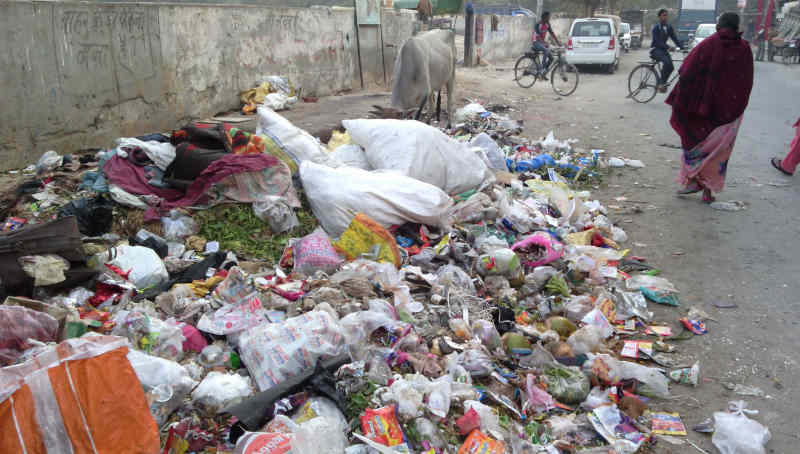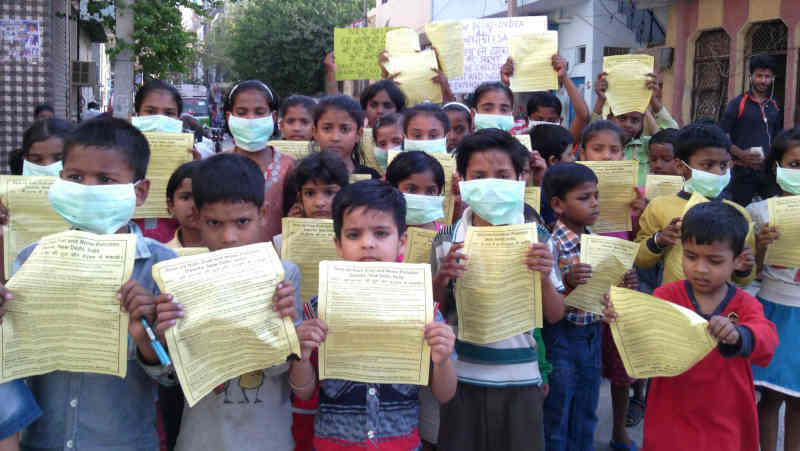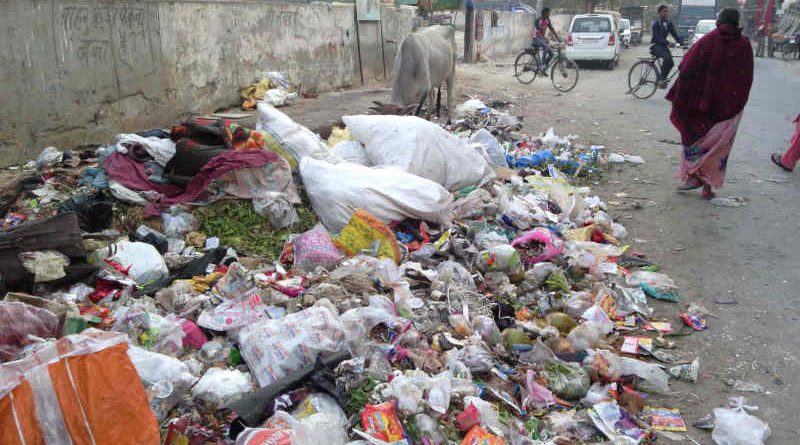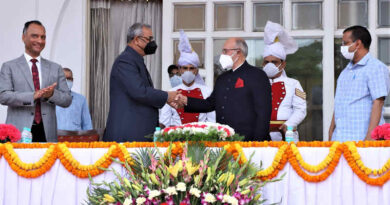Air Pollution May Cause Mass Exodus from Delhi

While the corrupt authorities in Delhi are not taking any steps to tackle pollution, the distressed citizens have no other option but to leave the city.
By Rakesh Raman
An interactive tool on the Breathe Life 2030 website shows a Particulate Matter (PM) 2.5 level of 143 micrograms per cubic metre (annual mean) in India’s capital New Delhi. This is over 14 times over the WHO (World Health Organization) safe level of 10 µg/m3.
Simply put, the people of Delhi are inhaling poison from the air. Air pollution levels get so severe that many residents regularly wear masks and authorities resort to emergency measures such as banning construction and shutting schools.
While WHO estimates that nearly 1.8 million people die prematurely in the India annually because of air pollution, a large number of deaths – estimated to be 100,000 – take place in Delhi. Pollution also is causing serious diseases such as irritation in eyes, skin rashes, coughing, sneezing, hayfever, asthma attacks, and amnesia among the people of the city.
Bureaucratic and political corruption is the main reason for lethal pollution in Delhi. While the corrupt authorities in Delhi are not taking any steps to tackle pollution, the distressed citizens have no other option but to leave the city.
It is now being observed that many people are running away from Delhi like refugees or Internally Displaced Persons (IDPs). As a result, India is falling in the category of countries with large IDP populations – such as Syria, Colombia, Iraq, Congo, Sudan, Nigeria, and Somalia.
[ Environment Protection: Join the Green Group of Delhi ]
Recently, a special environment-protection authority in India – the National Green Tribunal (NGT) slapped a fine of Rs. 25 crore on Delhi government run by Aam Aadmi Party (AAP) for its failure to check pollution in the city.
In its order, NGT observed that despite its clear directions, there is hardly any action for compliance of orders of the Tribunal and pollution continues unabated in blatant violation of law and under the nose of the authorities “who have hardly done anything concrete except furnishing excuses and helplessness.”

How Stubble Burning Spreads Pollution in Delhi
The UN environment-protection agency UN Environment believes that stubble burning is a major factor that increases the pollution levels in Delhi.
But what is stubble burning? UN Environment explains that after a rice paddy is harvested using combine harvesters, loose stubble or straw is left in the ground.
Farmers in India’s top two farm states, Punjab and Haryana, burn the stubble in the open to immediately prepare the fields for wheat cultivation. Since farmers need to sow that wheat within two weeks of harvesting the paddy, they burn the straw to save time, labour, and money.
[ Read: Clean Climate Environment News Magazine ]
Paddy stubble is a relatively modern phenomenon. It has been blamed on farmers switching to mechanical combine harvesters in the 1980s which skim from the top and leave 15 to 20 centimeters of the paddy plant in the field.
According to UN Environment, between end-September and mid-November each year, farmers from Punjab and Haryana states burn an estimated 35 million tonnes of crop residue after they harvest their rice crop.
[ Delhi Pollution Is More Dangerous for Children and Senior Citizens ]
“Farmers burning their leftover rice plants release black carbon as well as gases such as carbon monoxide and nitrous oxide into the atmosphere that contribute to the smog that affects cities like Delhi at certain times of the year,” says James Lomax, Sustainable Food Systems and Agriculture Programme Management Officer at UN Environment.
| Download and Read RMN Publications | ||||
| TechWise Today | The Integrity Bulletin | Clean Climate | Legal Directions | Young Learner |
While India’s federal environmental court banned the practice of burning crop residues in five states, including Punjab and Haryana – the practice continues, UN Environment reveals.
Thus, air pollution from stubble burning reaches the city of Delhi. Other contributors to the city’s poor air quality include open waste burning, massive construction, transport, industry, thermal power stations, and careless littering of plastic.
By Rakesh Raman, who is a national award-winning journalist and social activist. He is the founder of a humanitarian organization RMN Foundation which is working in diverse areas to help the disadvantaged and distressed people in the society.



